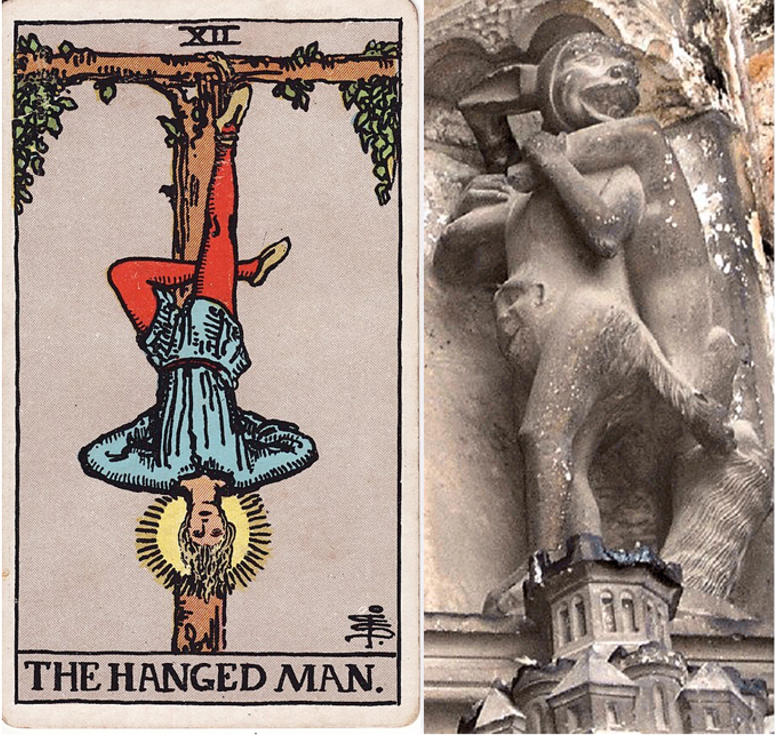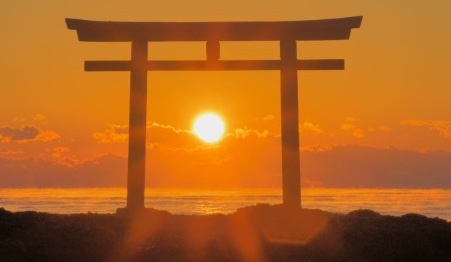Mechanical and Conscious Perspectives on Transformation
Transformation can be viewed from two perspectives, one mechanical and one conscious. Mechanical transformation occurs when one’s original nature fragments into a multitude of temporary identities—the many ‘I’s. A newborn baby has yet to acquire these ‘I’s, but they develop rapidly. The moment the baby realizes it can learn to control its own movements, the original nature begins to shift, taking shape within the moving and instinctive centers. By the time one becomes a teenager, this transformation is complete, and one is fully identified with the many ‘I’s. The many ‘I’s are symbolized by the number ‘ten thousand’.
“The universe lies in your hands; the ten thousand transformations are born from yourself.”
— The Scripture of Hidden Agreement (Yinfujing, Tang dynasty 7th–9th century CE Taoist text)
This quote describes the transformation of the One into the ten thousand. The Confucian text The Record of Music expresses this idea as follows:
“There is no end to the things that affect a man, and if one’s likes and dislikes lack moderation, then when things arrive, they transform a person「化」. To have things transform a person means that the voice of the Heavenly principle within is stifled, so human desires consume one. As a result, the heart gives rise to rebellion, deceit, and falsehood.” —The Record of Music, from The Book of Rites
Upright? Or Upside-Down?
Similar to the quotations above, the Fourth Way states that man functions as a stimulus-response machine. The two images below show two ancient forms of the Chinese character for transformation. The first,「化-hua」depicts a person standing upright on the left, while on the right, a person is upside down. This imagery parallels a sculpture by an anonymous 12th-century Italian artist, shown on the left.

Image: The Master of the Metopes, Modena Cathedral’s Lapidary Museum (XII)
This imagery shows ‘transformation’ symbolically represented as turning upside down. This is a concept that many esoteric traditions, including the Fourth Way, speak about.
“All misunderstandings arising in the process of our collective life, especially in our mutual relationships, and even such great events as wars, civil wars, and other calamities are simply the results of a property of the common presence of ordinary people who have never specially worked on themselves, which I would call “reflecting reality upside down.” — Gurdjieff, Beelzebub Tales to his Grandson

Tarot card XII The Hanged Man — The devil with a woman overthrown, Chartres Cathedral
When one is upside down, one cannot perceive truth, because it means that one has turned into the many ‘I’s. Each ‘I’ is very brief, possessing only a narrow, subjective understanding, shaped by its own immediate concerns. Even if one has the aim to awaken, the many ‘I’s don’t know about it. Such an aspiration to awaken belongs only to a small group of ‘I’s known as the steward. The majority of the many ‘I’s are either have no interest in this or actually oppose it. Seeing truth means first recognizing that one is ‘upside down.’ That is, identified with each passing ‘I’, imagining it as if it were the whole.
“Protect the King that he may not be upside-down.” — Pyramid Texts
“You shall walk upon your feet. You shall not walk upside down.” — Egyptian Coffin Texts
Righting Oneself: Restoring the Original Spirit
The next step is to find a way to turn right side up, leading to the second meaning of transformation. This is the restoration of one’s identity to its original spirit. This conscious process requires cultivating an inner steward, a task one cannot accomplish alone. Guidance from a conscious school is essential to awaken and educate this steward.
A mature steward possesses the tools and experience necessary to awaken the higher self. With sufficient exposure to higher states, the steward also develops new understandings. It begins to comprehend the many symbolic representations found in art and culture—messages left by conscious schools throughout history. These symbols serve as a map, revealing the method for true awakening.
The Flower as a Symbol of Awakening
Many esoteric traditions use the flower as a symbol of awakening. According to legend, the Buddha once held up a flower in silence. Only one of his disciples grasped its meaning and smiled. This moment marks the origin of Zen, establishing a direct transmission beyond words.

An AI generated image of a Noh actor as a flower spirit.
The concept of hana 「花」, meaning “flower,” is also central to Noh theater. It symbolizes both the fleeting nature of life itself and the transient moments of awakening. Just as a flower blooms briefly before fading, profound insights and states of awareness arise and pass, leaving behind a subtle yet lasting imprint.
“When you chant the words, a certain presence should come forth of itself.” – Zeami, Cultivating the Flower
The Chinese character for ‘flower’ 「花」consists of the character for “transformation” 「化」below and the grass radical 「⺾」 above. The ancient shape of the character for grass is three and three leaves of grass「艸」. Like a flower, grass grows out of a seed, symbolizing the initial impulse for awakening, the beginning of transformation.
“He that received the seed into the good earth is he that heareth the word, and understandeth it; which also beareth fruit.” — The New Testament, Matthew 13:23
These three and three leaves were very common in ancient Chinese characters. They symbolize two trigrams of the Creative ☰ ☰, creating the hexagram the Creative ䷀ with pure yang.
“When yin dissipates totally and pure yang dominates, the human becomes an immortal.” — Shui-Ching Tzu, Commentary on Cultivating Stillness
Reaching the state of pure yang, one transforms back to one’s proper orientation, returning to an upright state.
A Sequence of Efforts
This process is also called ‘the sequence’ and is usually only taught in conscious schools by word of mouth. Here are several quotations from various esoteric traditions, offering perspectives on the sequence from different points of view.
“The sequence is the master game; it is internal chess.” — Robert Burton
“I shall expound my thoughts intentionally in such a sequence that the essence of certain real ideas may pass automatically from this “waking consciousness,” into what you call the “subconscious.” Which in my opinion ought to be the real human consciousness.” — Gurdjieff, Beelzebub Tales to His Grandson
“No single virtue by itself opens the door of our divine nature. All the virtues must be linked together in the correct sequence.” — Mark the Ascetic, The Philokalia
“All things have a source and an end; all events have a beginning and an end. Know this sequence and you will be near the Tao.” — Shui-Ching Tzu, Commentary on Cultivating Stillness
“This is not empty talk, but the sequence of the Great Way in the true method of producing an eternally living and immortal spirit and holy man. The conscious spirit, departing from the cycle of births, has been brought to the six-fold present, golden genius.” — Commentary on The Secret of the Golden Flower
Walther Sell has been a student of the Fourth Way for decades. He is the author of a website on Oriental esoteric teachings, Inner Journey to the West. See other articles by Walther for the FourthWayToday.org: Walter Sell articles.
